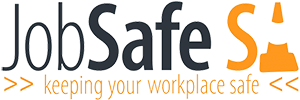Consultation is a two-way process between you and your workers where you:
- talk to each other about health and safety matters
- listen to their concerns and raise your concerns
- seek and share views and information, and
- consider what your workers say before you make decisions.
Consultation requires that:
- relevant work health and safety information is shared with workers
- workers are given a reasonable opportunity to express their views and to raise health or safety issues
- workers are given a reasonable opportunity to contribute to the decision-making process relating to the health and safety matter
- the views of workers are taken into account, and
- workers are advised of the outcome of any consultation in a timely manner.
Management commitment and open communication between managers and workers is important in achieving effective consultation. Your workers are more likely to engage in consultation when their knowledge and ideas are actively sought and any concerns about health and safety are taken seriously.
Consultation does not mean telling your workers about a health and safety decision or action after it has been taken. Workers should be encouraged to:
- ask questions about health and safety
- raise concerns and report problems
- make safety recommendations
- be part of the problem solving process.
While consultation may not result in agreement, this should be the objective as it will make it more likely that the decisions are effective and will be actively supported.
Barriers to Effective Group Decisions/Consultation
- Lack of group maturity
- Conflicting goals of members
- Failure to communicate – listen
- Ego of group members
- Conflict avoidance
- Power differences
- Distrust
- Lack of commitment
- Insufficient time
- Inappropriate group size
- Foregone conclusion
Effective Group Consensus
Can only occur with a recognition of, and commitment to:
- The increased time required to reach decision
- The full time participant of all employees
- The skill levels of members in:
- Communicating
- Negotiating
- Organising
- The absence of need for crisis decision making
Involving workers and health and safety representative/s in work health and safety matters is a legal requirement and makes good business sense. When management works with workers to achieve shared objectives workers are more likely to understand decisions and actively support them.
Workers have a good understanding of high-risk activities in their work areas. By setting up a communication system, where management and workers have a genuine opportunity to exchange views, informed decisions can be made based on shared information. Effective worker involvement and cooperation assists in preventing incidents, injuries and ill health.
The Person Conducting a Business or Undertaking (PCBU) should actively consider arrangements for establishing formal consultative methods. For example, in larger organisations, consider health and safety representatives and safety committees. These arrangements should be developed in consultation with workers, documented and communicated to everybody. For smaller organisations, less formal systems such as a regular ‘toolbox’ or safety communications meetings can be considered. Some organisations combine formal and informal methods very effectively. Any proposed changes to the work environment, work processes or the Health and Safety management system must be discussed with workers. PCBUs must involve workers, so that potential health and safety issues can be identified and resolved. Workers have the practical experience that is valuable in ensuring that workplace changes are implemented effectively and do not create further risks.
Training must be provided to all staff to ensure the communication you have established is effective.
Useful Links
Health and Safety Committees
Negotiating with Management
Speaking at a Meeting
Acknowledgements:
Work Health and Safety Act 2012
Work Health and Safety Regulations 2012
Code of Practice – Work Health and Safety Consultation, Co-operation and Co-ordination
